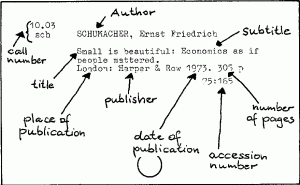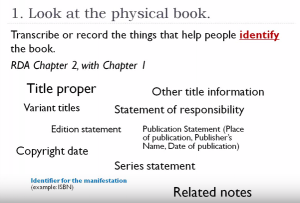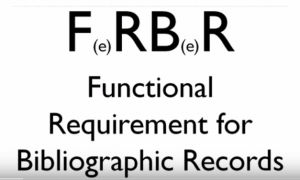NSW DoE Libraries for Future Learners Conference October 19, 2018
This keynote was to be delivered by Dr Marcia Mardis, Florida State University based Library Specialist and academic, who had to cancel due to hurricane damage (sending her messages of good will from Australia!). So, June Wall, Library Coordinator for NSW Department of Education (NSW DoE), stepped in and delivered a stirring keynote that inspired and encouraged an audience of over 300 Teacher Librarians from a wide range of schools across NSW. Many of the audience had travelled long distances and it turned out the travel was well worth the effort.
My notes from June’s presentation have been fleshed out in this post and some links provided to other internet resources. This is a deep water keynote! You’re going to need more than swimmers and a towel! June has a way of presenting deep thinking in chewable chunks and she covered a LOT of ground in a relatively short presentation. I have only included images that I was sure about permissions for and knew the heritage of the graphic. I hope I have done credit to the clarity that June attempted to achieve.
The idea was to give an introduction to what has been achieved in recent times by the American Association of School Librarians (AASL) and an explanation of how they achieved their Future Ready Libraries focus. June’s intent was to begin the process of getting NSW Teacher Librarians(TL) to consider what we need to revisit, rewrite, reconfigure in our core policy in order to meet the challenges of future focused learning in NSW DoE schools.
The American Association of School Librarians (AASL) standards document was developed using a process that may or may not be useful to us in NSW. However, it is a case study that we can certainly learn from.
They started by investigating their core beliefs, their shared history, their external influences and established their Shared Foundations (link).
- Inquire
- Collaborate
- Explore
- Include
- Curate
- Engage
These foundation statements may or may not apply to our circumstances.
They settled on a model of four domains as the core values and competencies being advanced through their work in the school library.
- Think
- Create
- Share
- Grow
For each of the Shared Foundations these domains provide a framework that goes with it.
A closer look at these frameworks will be possible once the resources from this conference are made available to conference attendees by June Wall in the coming weeks.
What the US have achieved within their Shared Foundations is to use the four domains, and for each of those domains, they’re taking it from the point of view of “what does the learner need to know?” i.e. What are the learner competencies required? What are the Teacher Librarian competencies required? How does the school library align with this framework?
For each of these areas they have applied the standards they have developed – a practical approach to the whole.
This approach really drills down to the student outcomes that we all want as the focus for our work as Teacher Librarians. If we want a student to be able to inquire well then our work has to help them to develop the information fluency they need. They need
- the skills to formulate the questions they need to answer for their personal interest or curricular topic
- to have access to their prior and context knowledge for the topic they are exploring and achieve new meaning
- the information access skills to find the answers they seek.
The AASL framework is the core of what these student outcomes come from.
There’s not a difference in what we are trying to achieve here in NSW, those outcomes, but there is significant difference in how we are currently approaching it. There is also the direct link in the AASL framework to what it means to be a Future Ready Teacher Librarian.
For each of the AASL Shared Foundations, these domains explicitly go through what it looks like as student outcomes and how the Teacher Librarians can achieve that outcome.
This AASL framework starts with a very different approach to ours about what the Teacher Librarian role is in school libraries. Most of the states of the USA have taken this framework on board.
This is where the US have come to. It is apparently making a good impact in US schools. This AASL model talks about learning as the whole process – not subsetting it.
Should we be finding the value in this shift in thinking?
Our current NSW information process model – ISP (link) (Information Skills booklet)has been with us for over a decade. The Information Process has not changed since previous iterations of the ISP model. The colours may have changed but the process is the same.
What does this mean for teachers in classrooms? Are they explicitly using this model? Do they know it exists?
Does this model assist teachers who are working with information literacy in the NSW curriculum?
Suggestion:
We need to start to think about Information Literacy differently. Have we been working at the Basic Skills area – are we teaching a specific skill that is being transferred from subject to subject? Do our students and teachers see themselves as information literate?
What we want to move to is to be Information Competent. This level not only has those skills but it has behaviours and abilities. Competence is being able to both do it and do it well. We are currently not operating mostly at a competence level – students rely on templates for even the basic bibliography in assessment tasks. They are not confident at even this level because we don’t provide them with the instruction and practice they need to achieve that confidence. It is not an embedded behaviour. We want them to move on from competence to literate/fluent.
We’ve had that aim… underneath syllabus outcomes and assessment requirements… but we don’t currently have a framework within which we can achieve information literacy at the levels required as entry level skills in the new NSW Stage 6 syllabi. We are not preparing students for the academic rigour now being required.
As professionals we all need to become information fluent and we need to model that in a way that students and teachers will exhibit their information literacy as a matter of course… assumed knowledge, assumed skill level, assumed assessment task requirement.
Most NSW DoE teachers are information fluent in a wide range of skill sets and areas of expertise for their subject knowledge. They do it but they don’t have the language and terminology around it. We need to get to the point where we can assume information is accessed appropriately in all of the modes and forms that it is available to our staff and students.
June Wall indicated that she also thinks we need to “overlay” the 3 core areas of
- Critical thinking
- Problem solving
- Creativity and innovation
These come out of a range of different skill sets but we see this requirement in the General Capabilities of the Australian Curriculum. These are core needs of our community and have been identified as such through our curriculum development processes.
Looking ahead
“Where can the Teacher Librarian plug the hole that is missing in schools?” Not as an enhancement but as a point of difference. The Teacher Librarian has a different expertise and we need to be explicit in how this skill set can best be utilised by individual schools.
This can be completely different in individual schools. We need to think differently about information fluency and use the Teacher Librarian to champion that learning in schools. This term “information fluency” encompasses every media form (including digital literacy) – not just books but everything that our students do that involves information.
June suggested some questions that need answers… a beginning to this journey into a changed model of information fluency in NSW DoE schools:
- What are your common beliefs? What is valuable to external stakeholders? What does the TL community value?
- What are your shared foundations?
- What are the areas of learning needed for future young Australians?
- How should a future focused model look, feel, sound?
These questions require us to collaborate on the answers, connect and share our thoughts, lead our colleagues into a new phase of information fluency in NSW DoE schools.
This journey has only just begun…


































